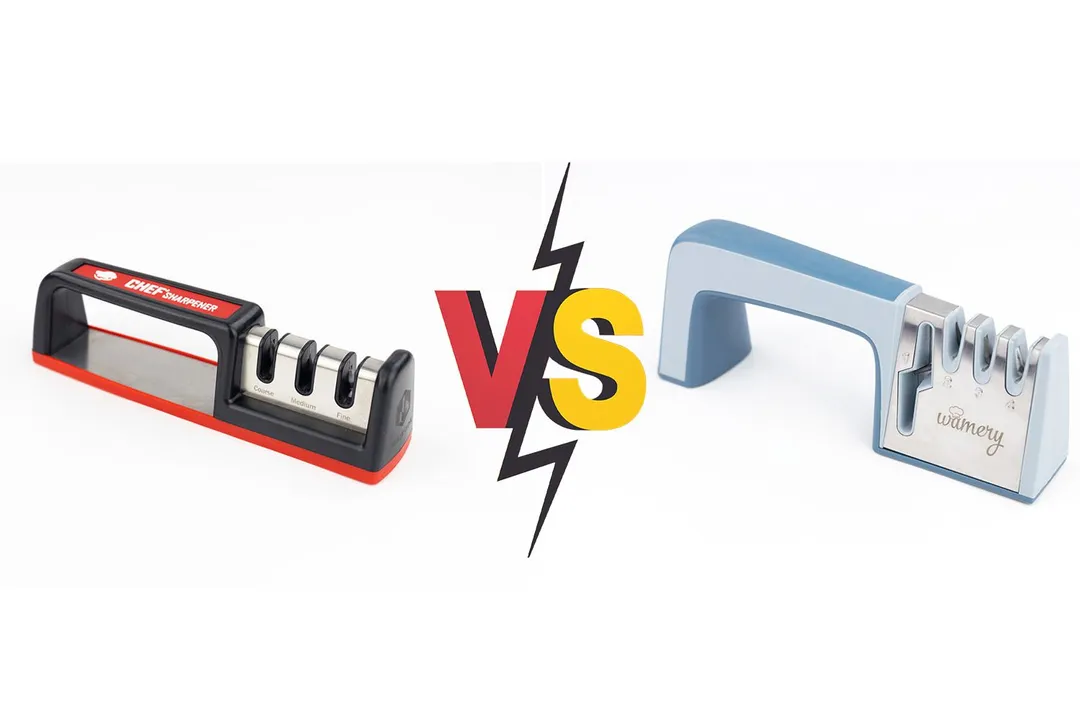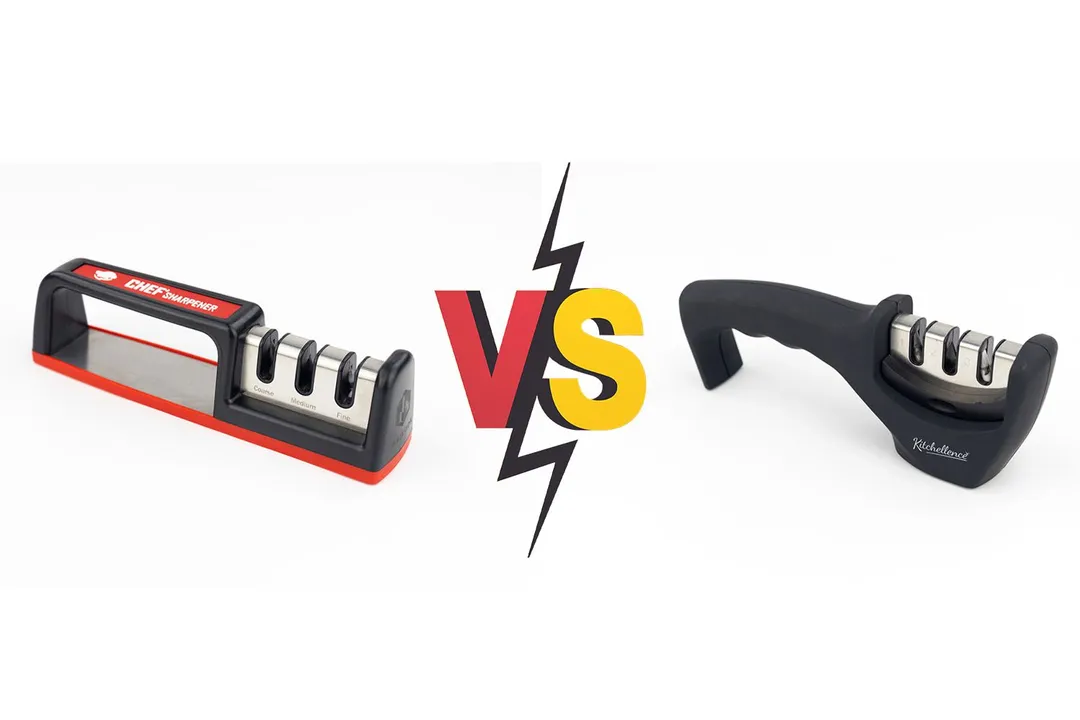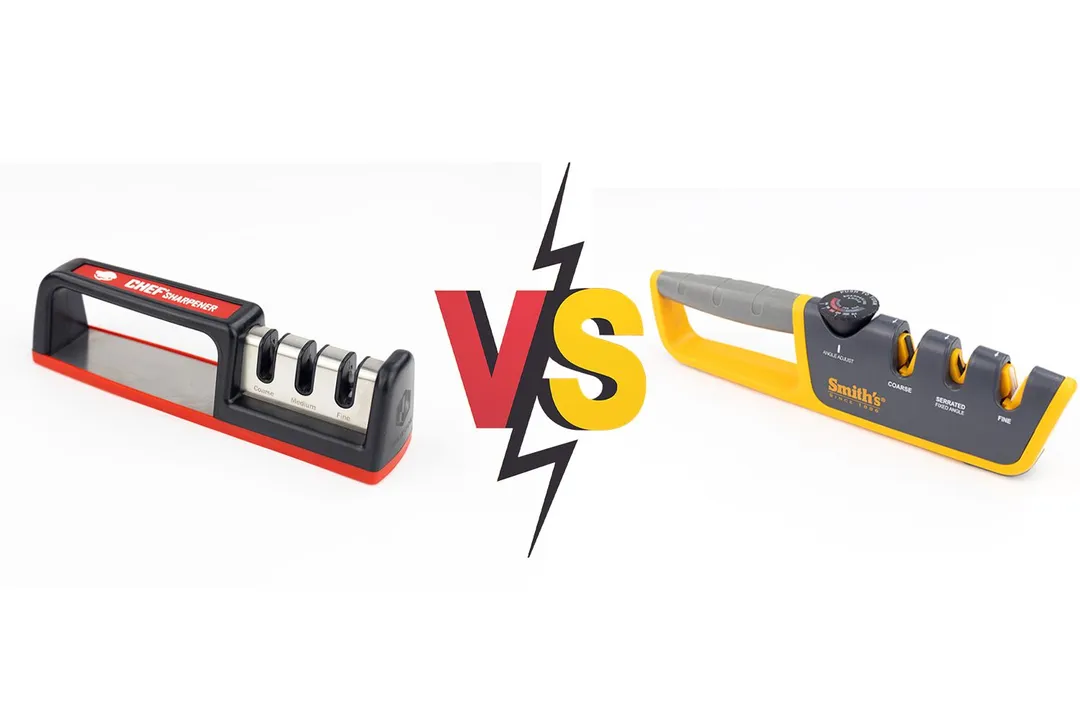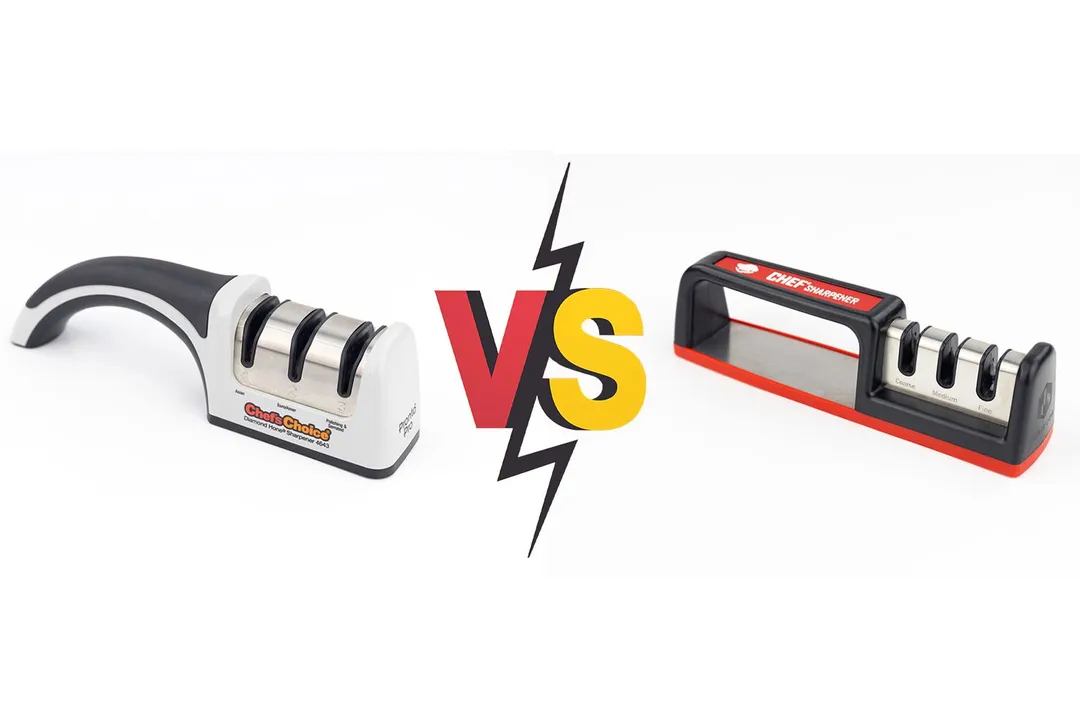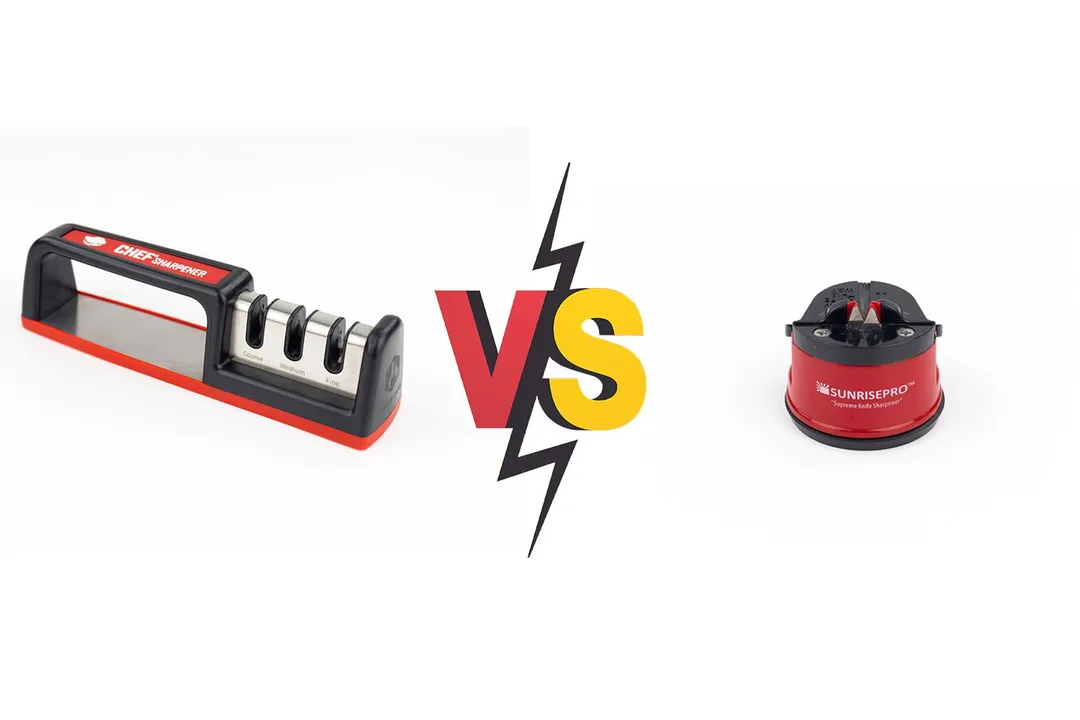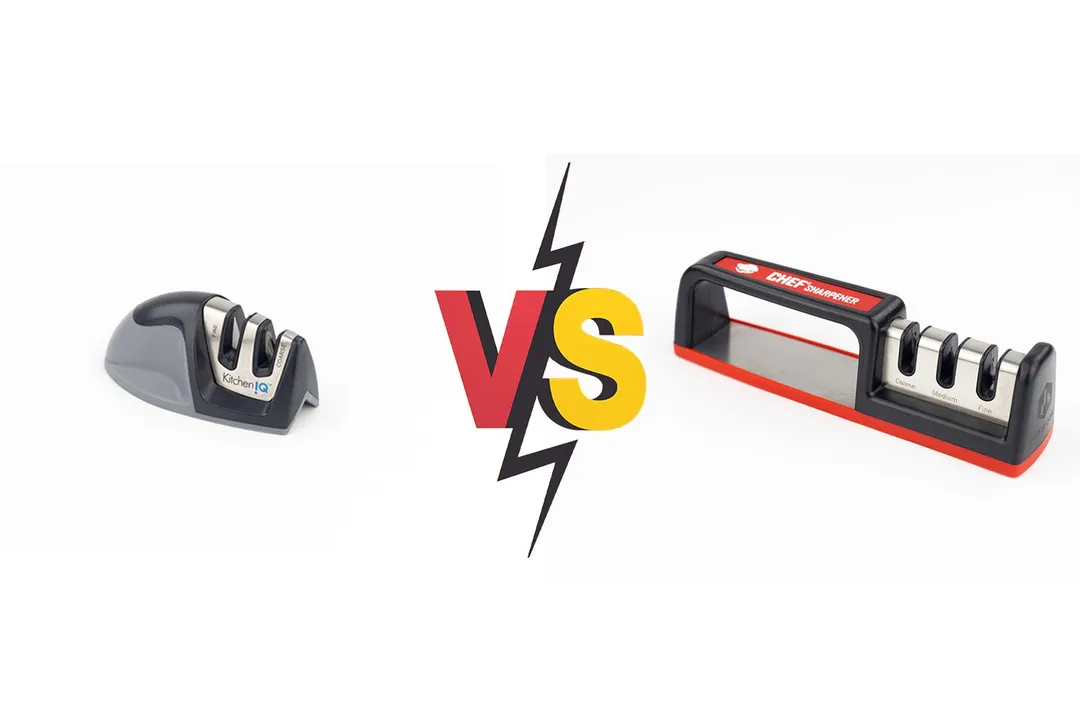Our recommendations are made independently through Research & Testing. We may receive commissions from purchases made via our links.
Cubikook CS-T01 3-Stage vs. Longzon 4-Stage Manual Sharpener Side-by-Side Comparison
Cubikook CS-T01 vs. Longzon 4-stage manual sharpener comparison: How they measure up in effectiveness, ease of use, and design.
Cubikook CS-T01
Tested Using Methodology v1.1Longzon 4-stage
Tested Using Methodology v1.1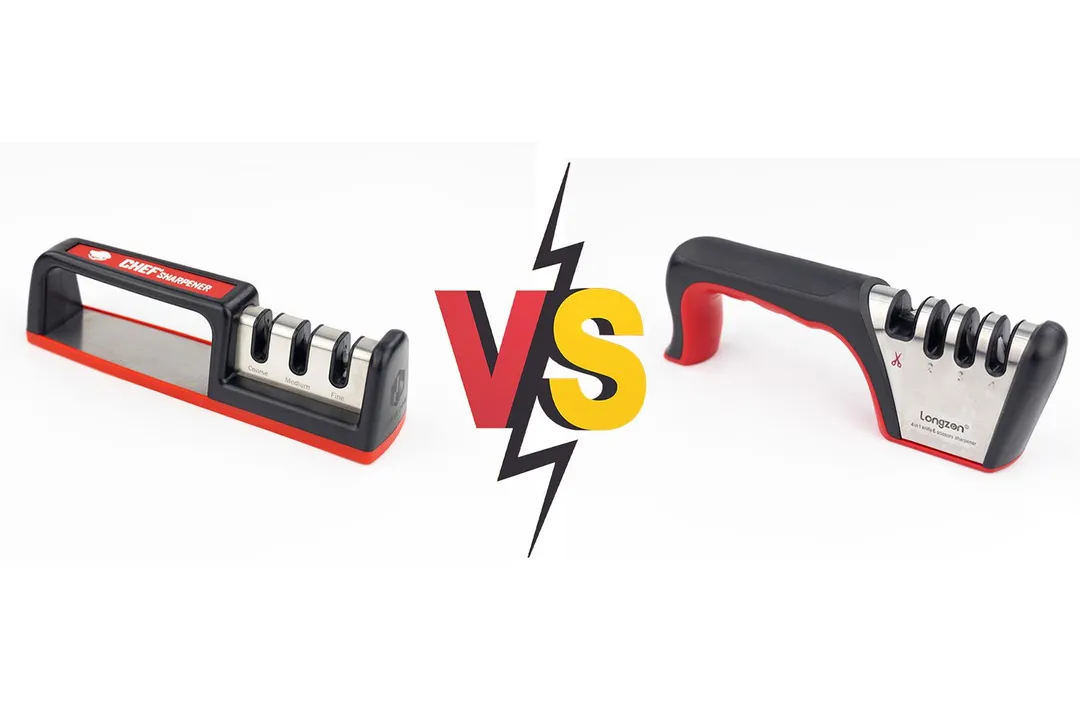
Overall Verdict
The Longzon 4-stage sharpener gave a decent performance in most of our tests, especially when it came to edge material retention and edge sharpness. However, it was mediocre in the deciding ones, such as sharpness and sharpening time. Other than that, it’s a well-made, sturdy, straightforward piece of equipment.
The Cubikook CS-T01 3-stage sharpener comes with its own flaws, namely a poorly attached brand label and a shoddily-fitted ceramic rods; yet, it found itself among the top in all parameters. With a practical design and strong construction, it offered great stability and was among the safest and easiest to sharpen with.
Pros & Cons
- Excellent stability
- Affordable price
- Consistent sharpness
- Solid and sturdy construction
- Sleek design
- Substantial, accommodative size
- Fine, smooth knife edge
- Inclusion of protective gloves
- Slot for scissors
- Small ceramic rods
- Flaky brand label
- Tall base
- Slow sharpening
- Ineffective slot layout
Key Specs
Where to Buy
*You help support HealthyKitchen101's product testing and reviews by purchasing from our retail partners.
Analysis and Test Results
Performance
Sharpening Time to Cut a Lemon
Material Retention
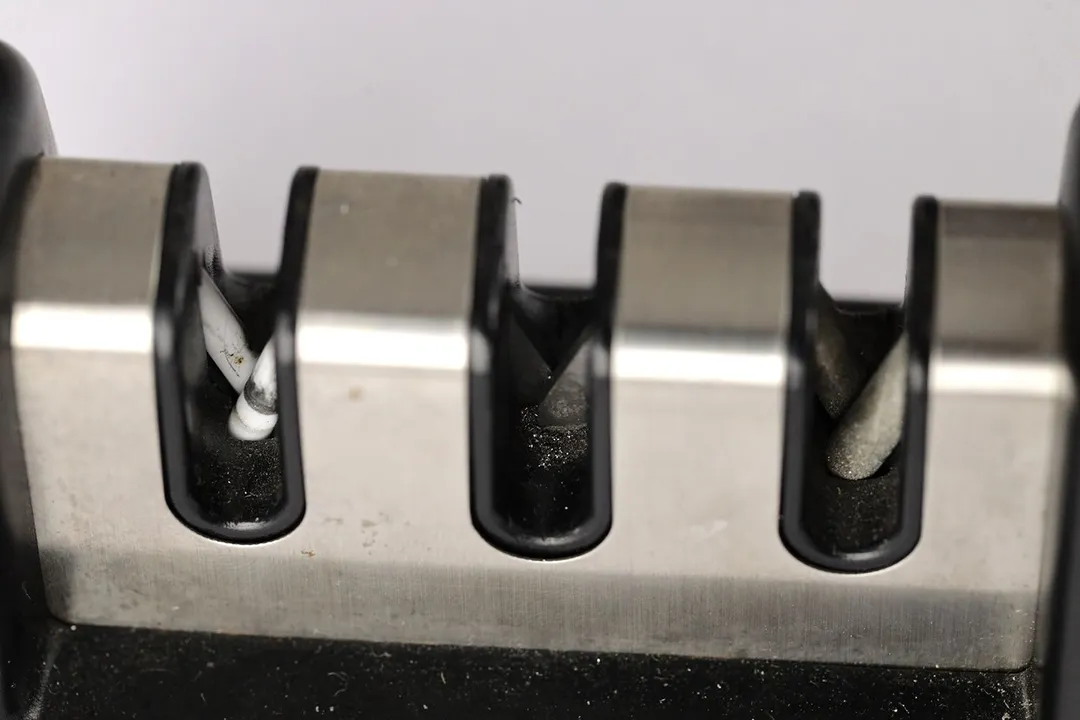
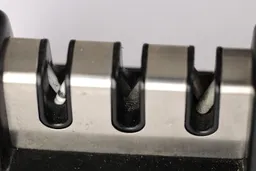

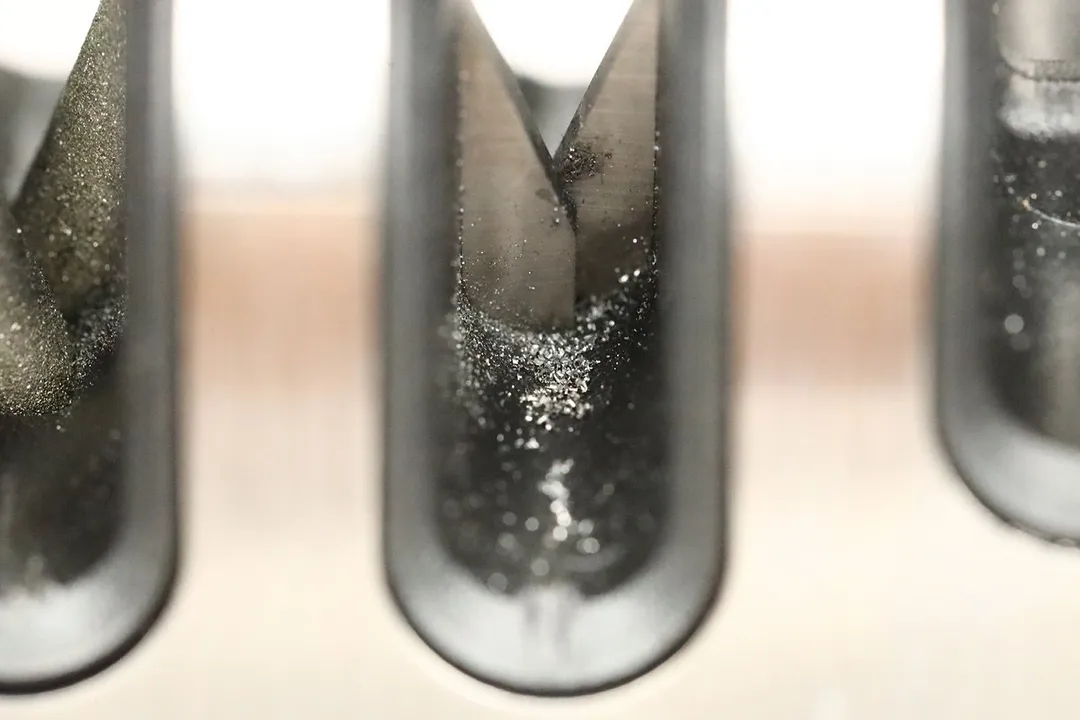

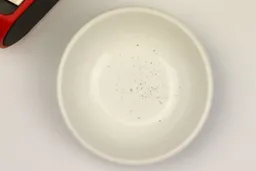
Maximum Sharpness Achieved
Edge Smoothness

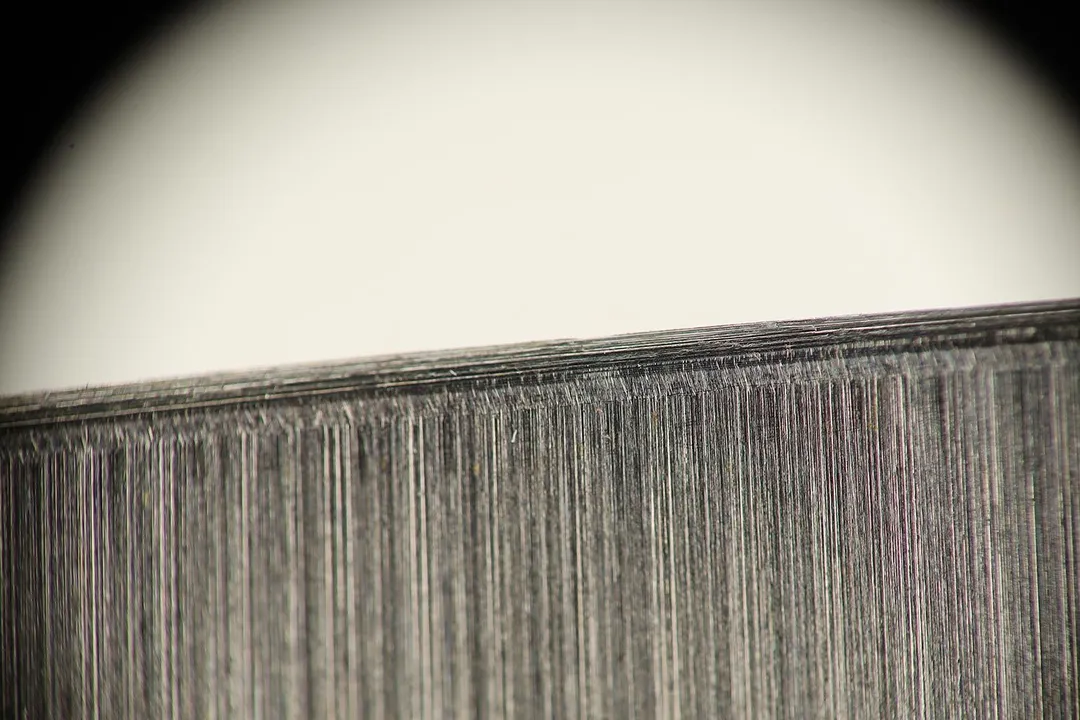
Design
In the Box
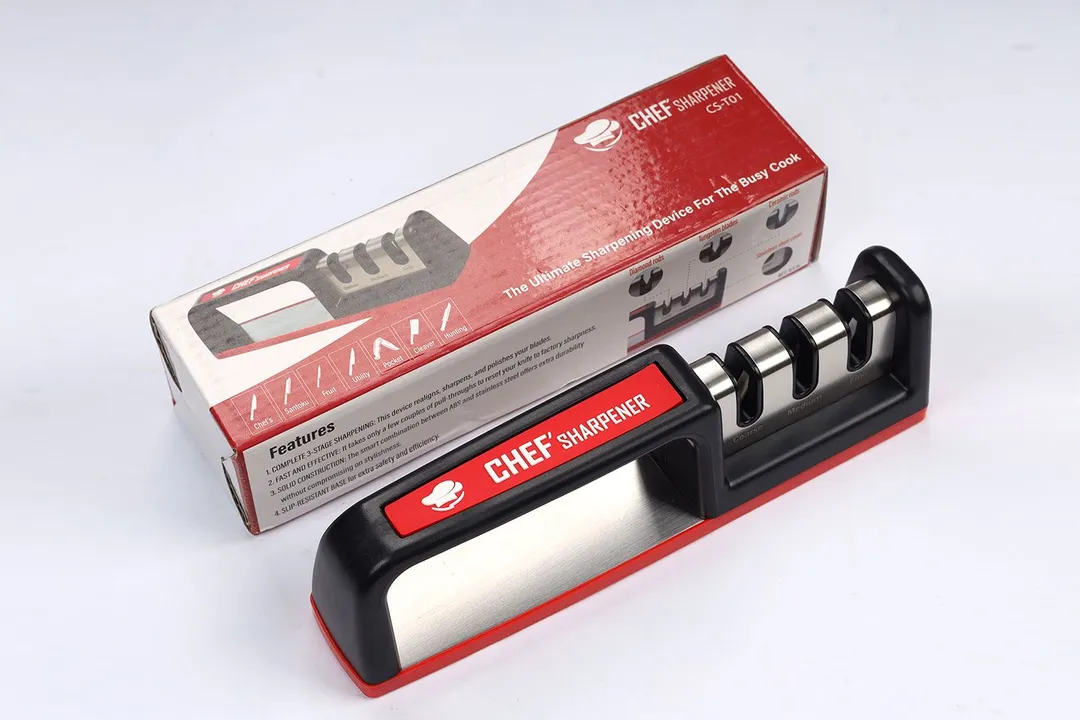
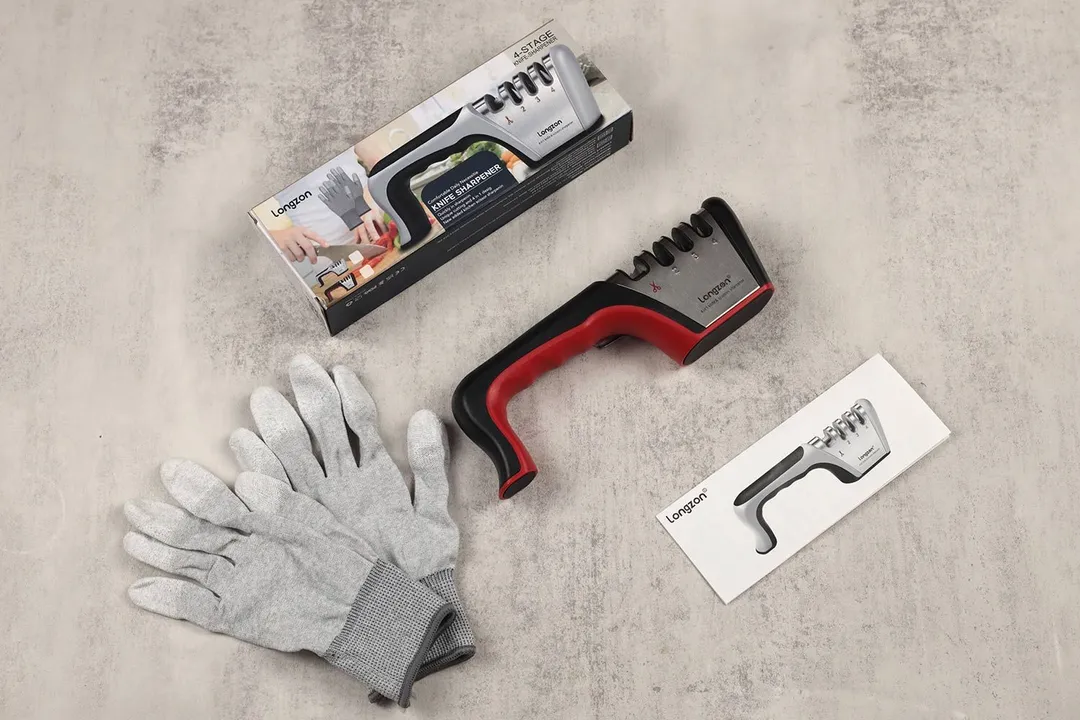
Dimensions
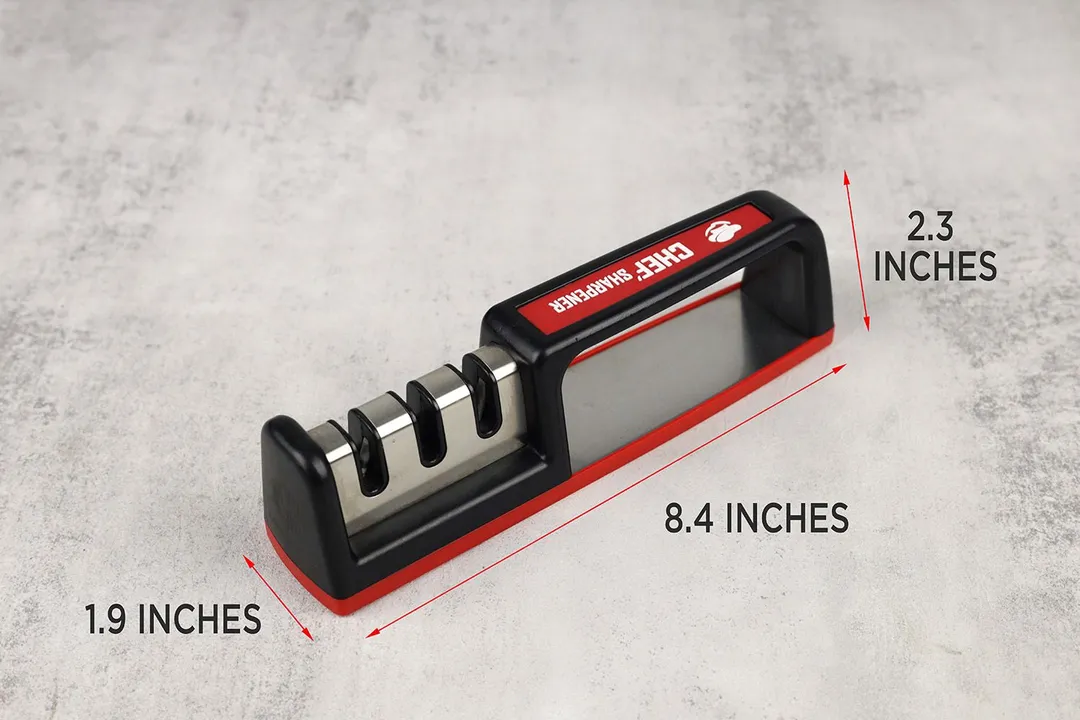
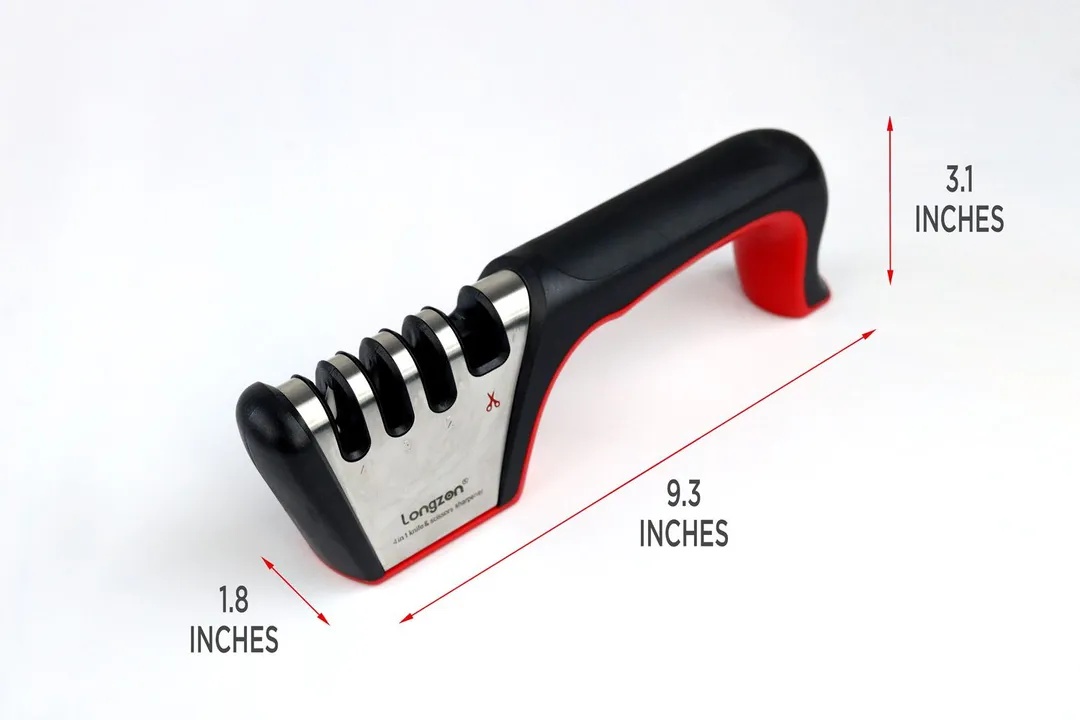
Build Quality
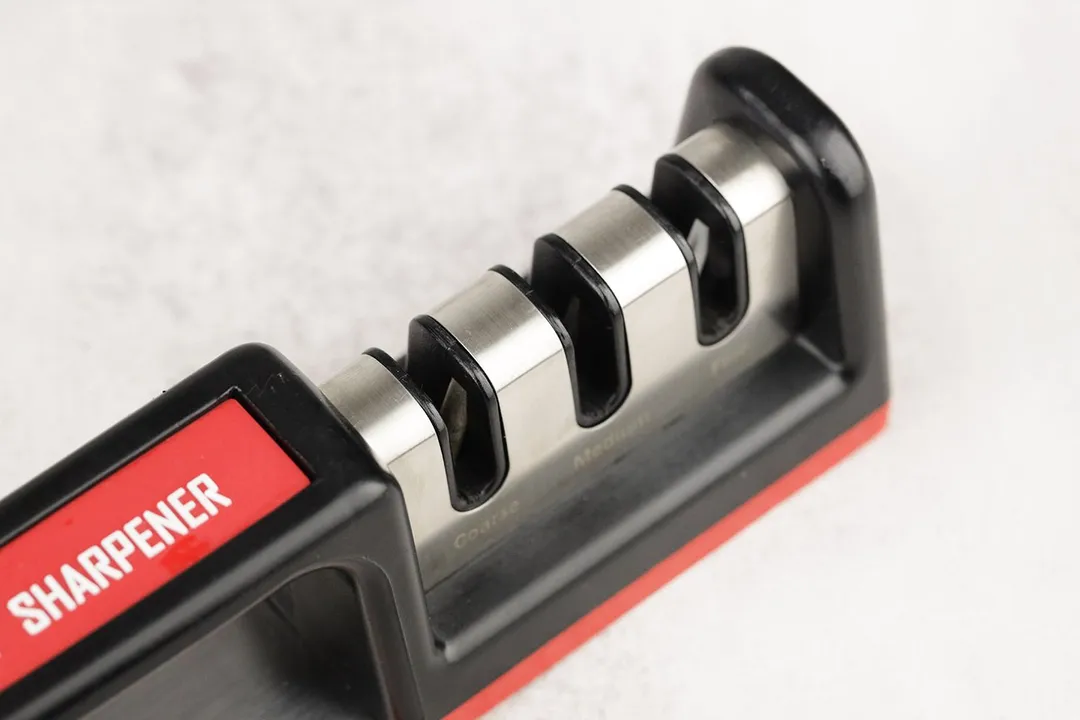

Working Section
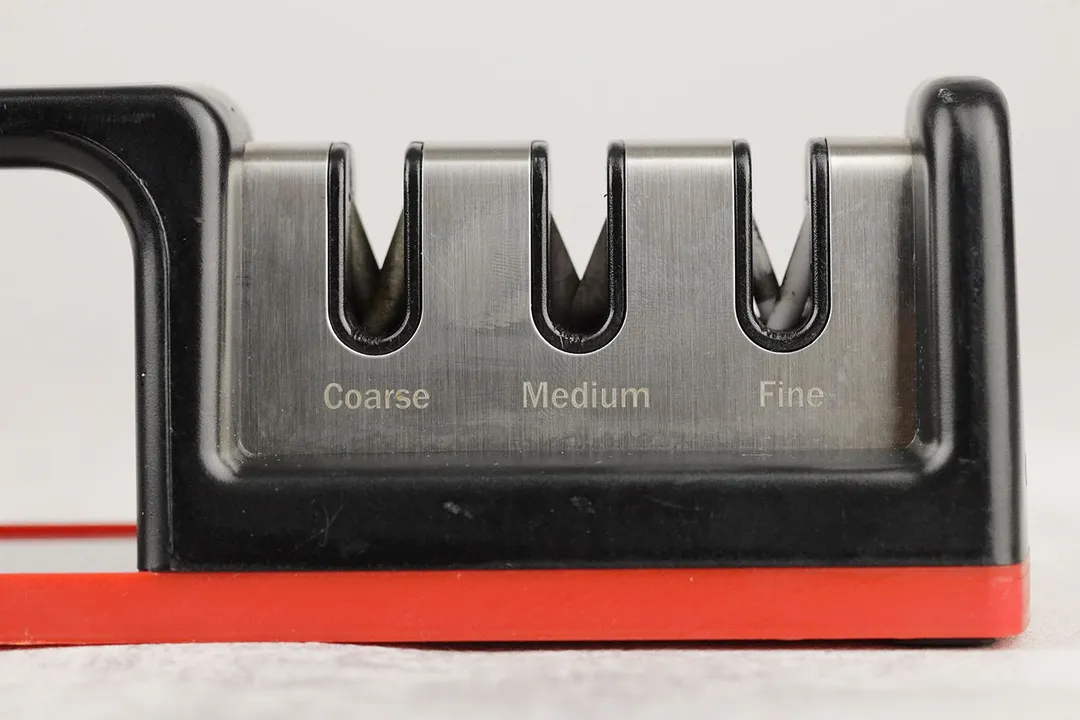
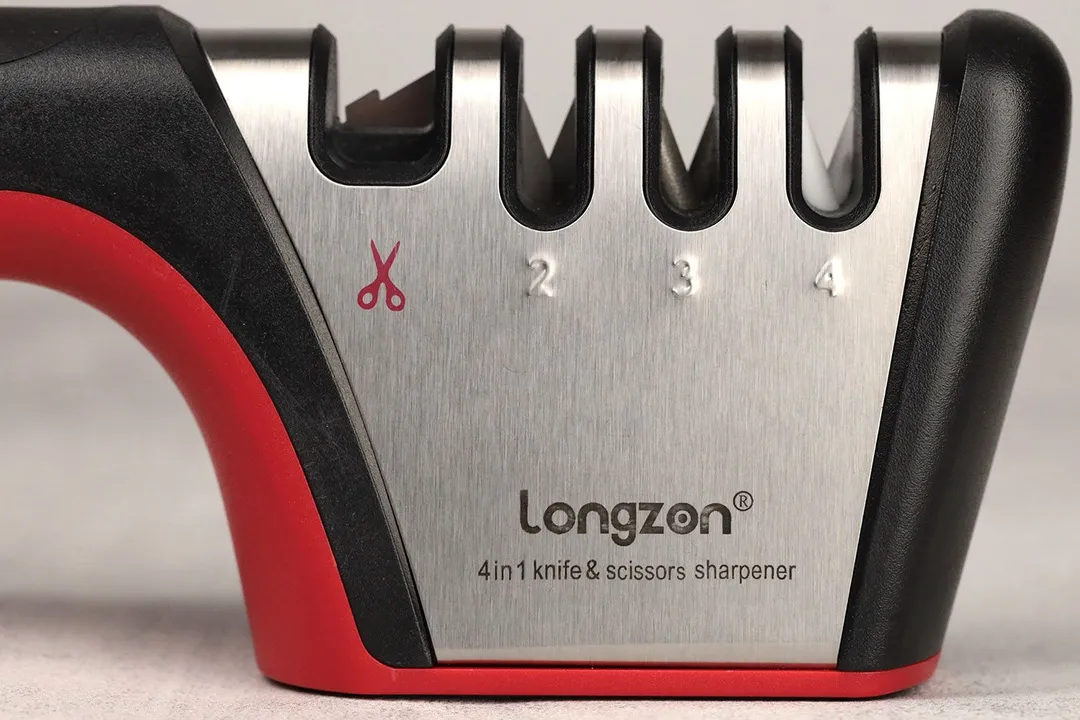
Base

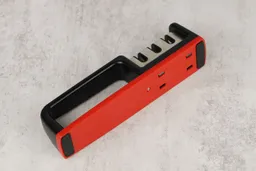
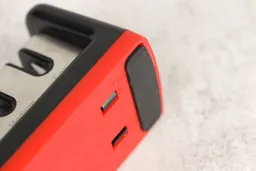
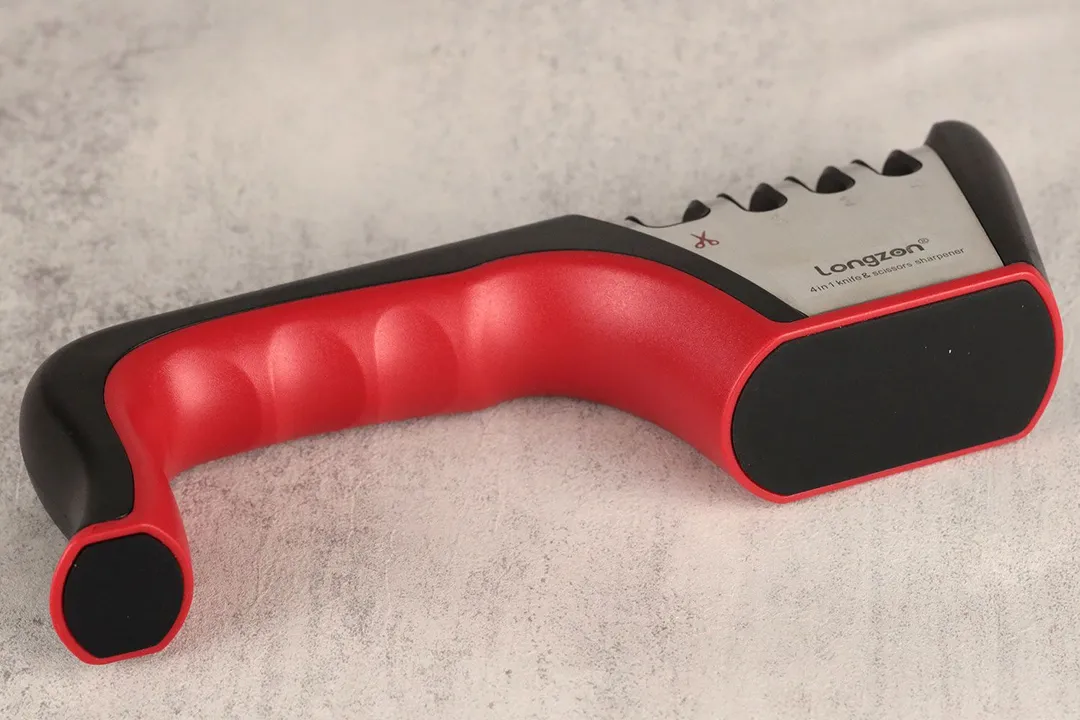
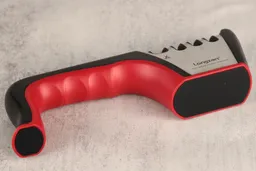
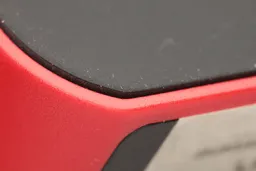
Grip
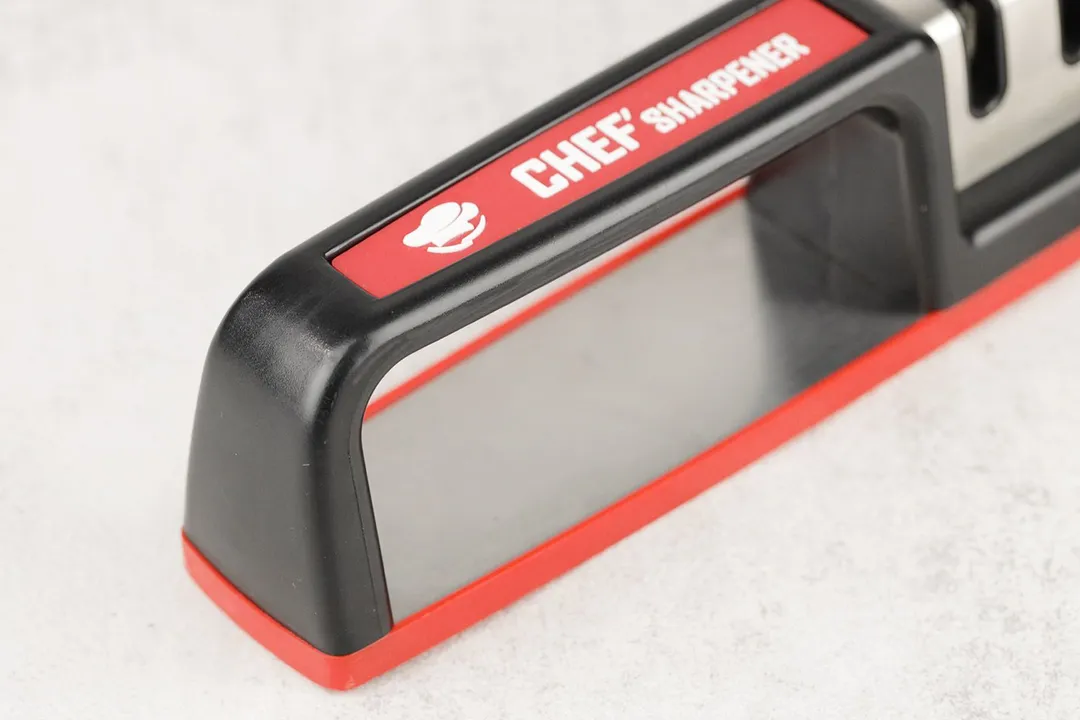
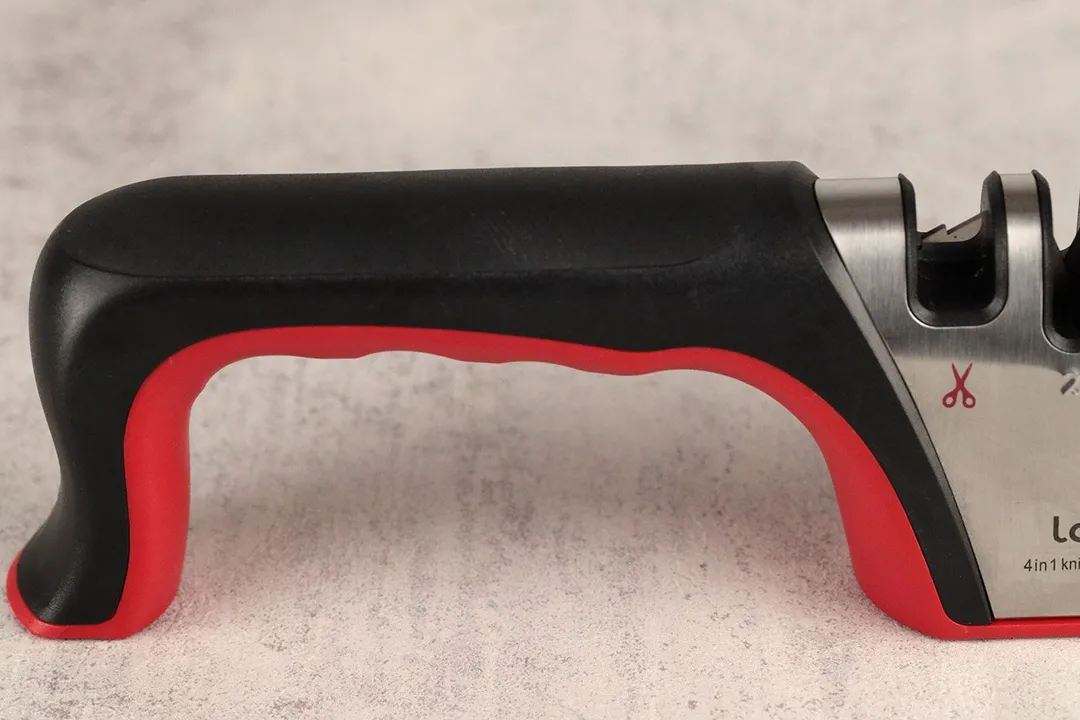
Usability
Slot Arrangement
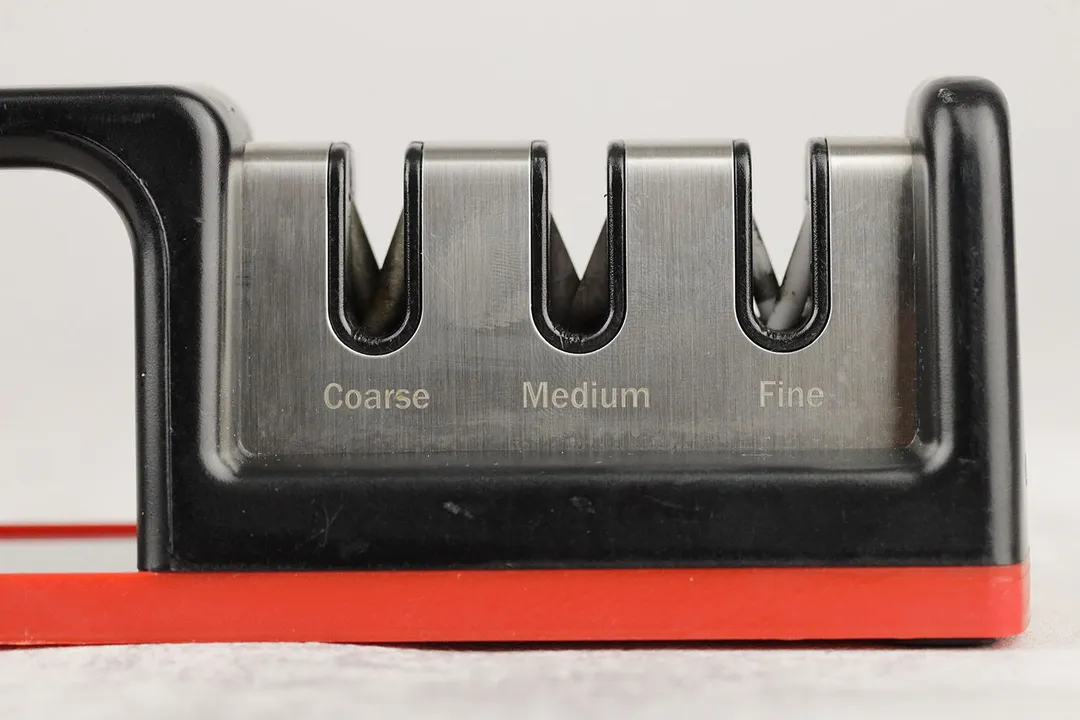
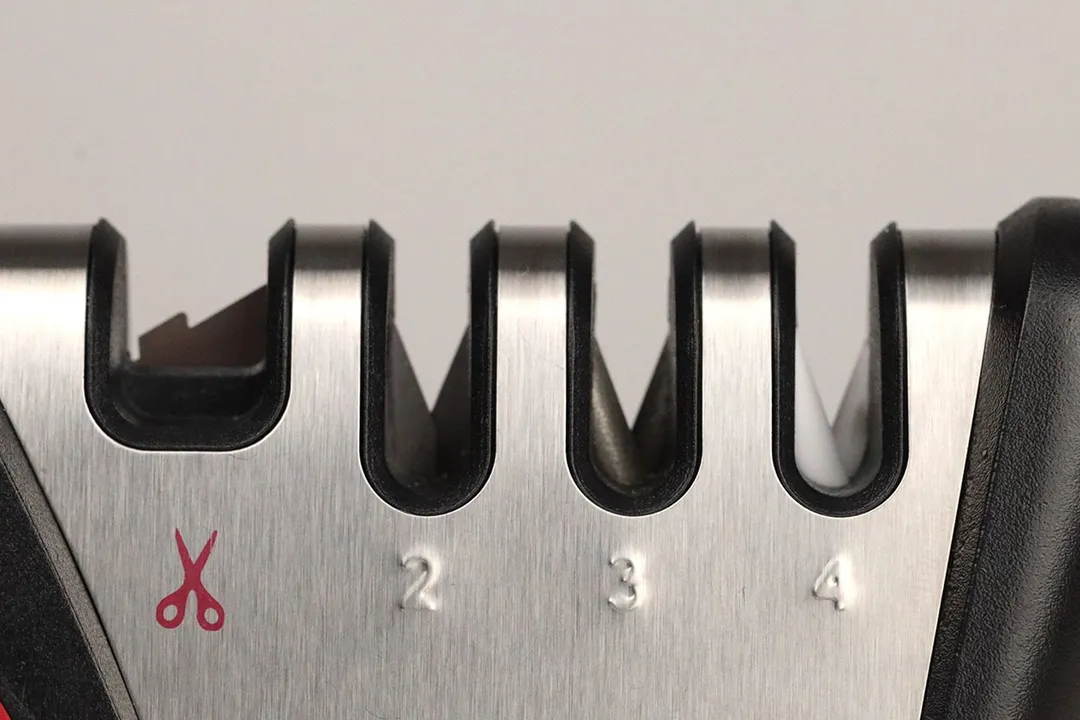
Insertion
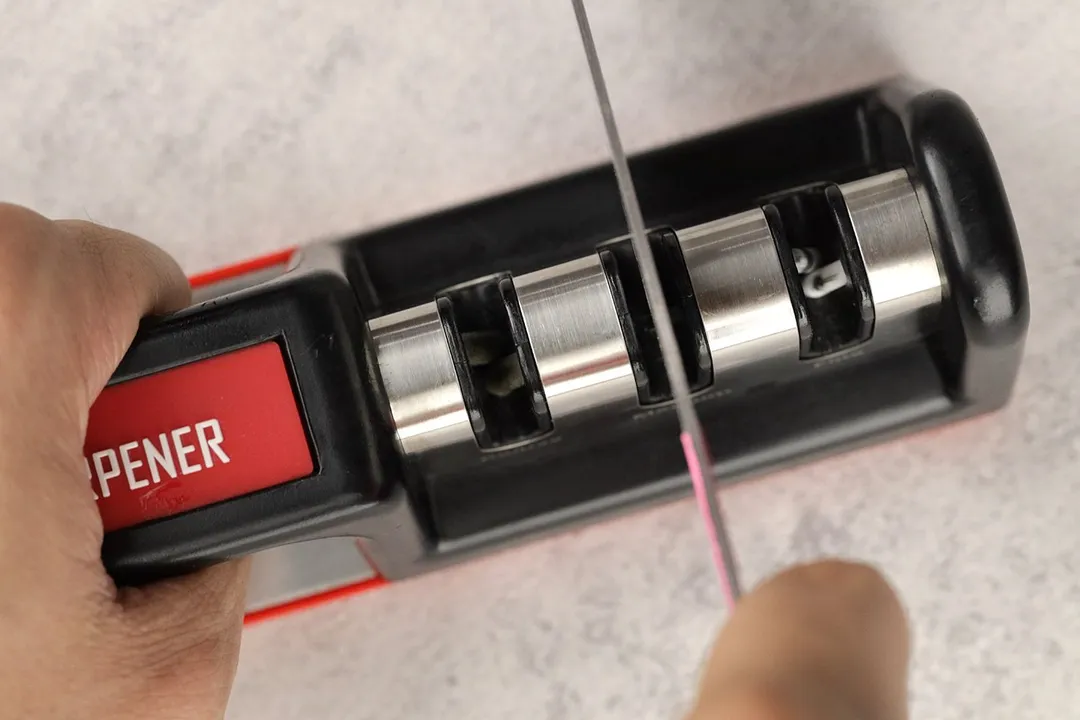
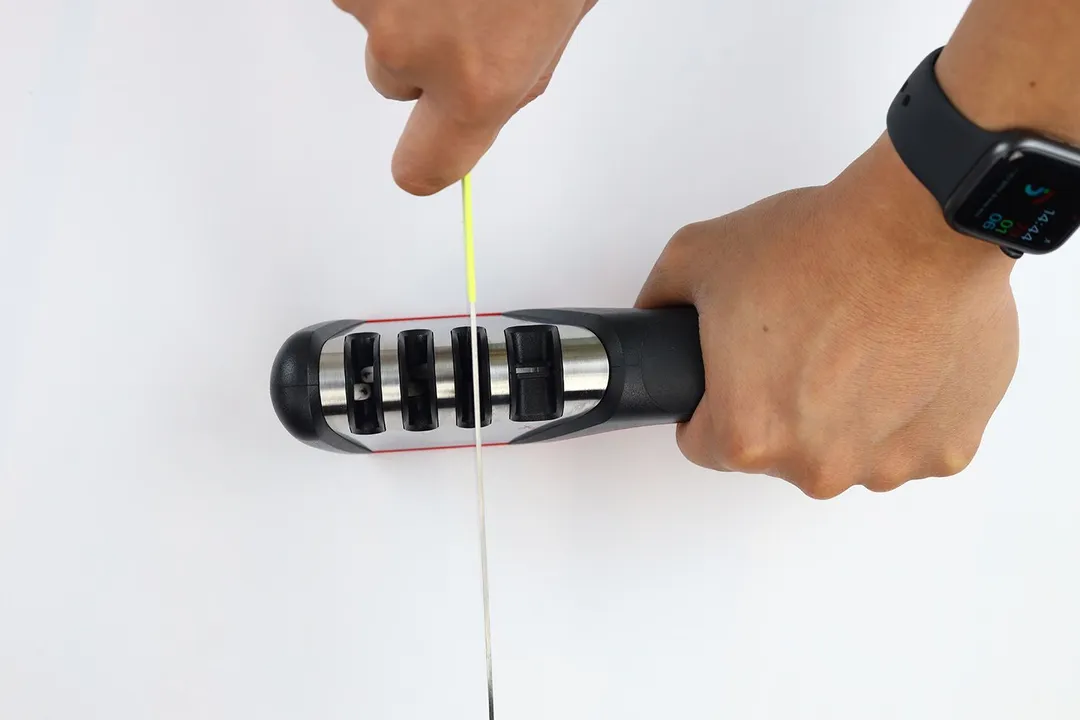
Pulling Through
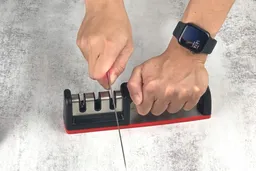
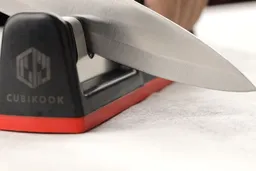
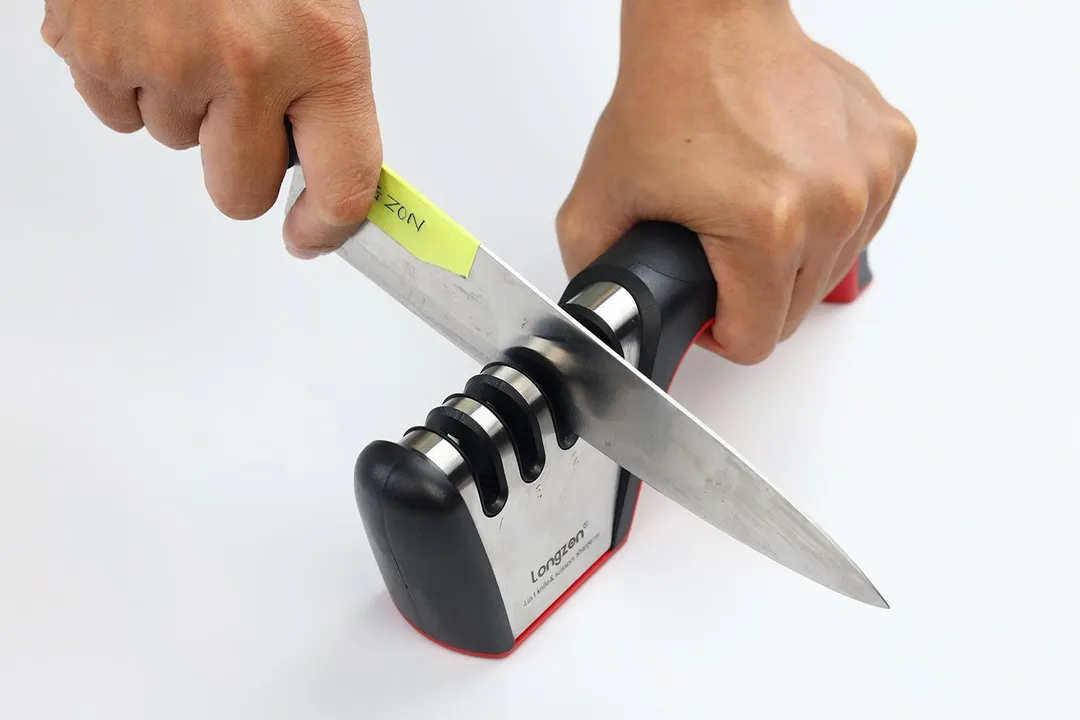
Stability on a Clean Surface
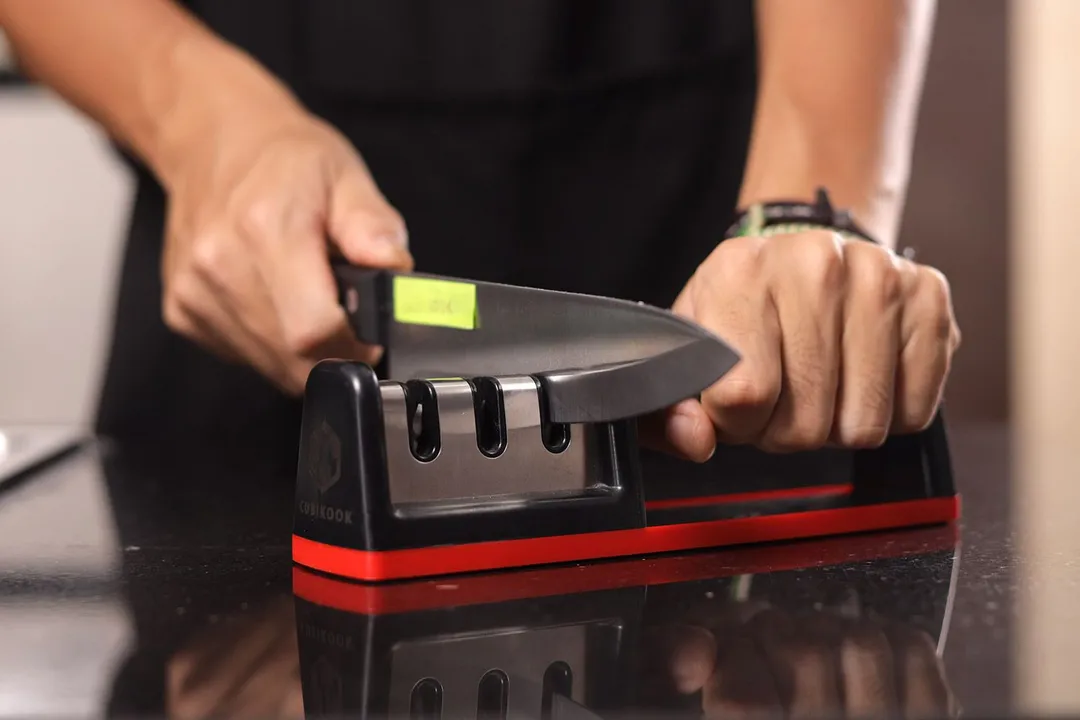
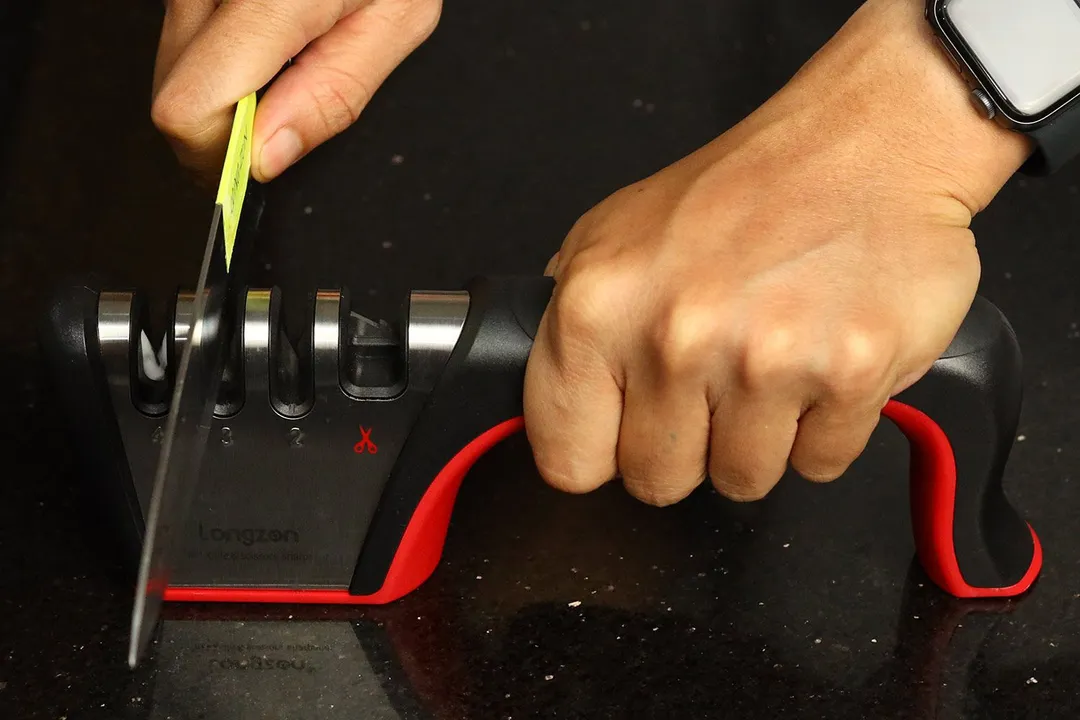
Stability on a Wet and Dirty Surface
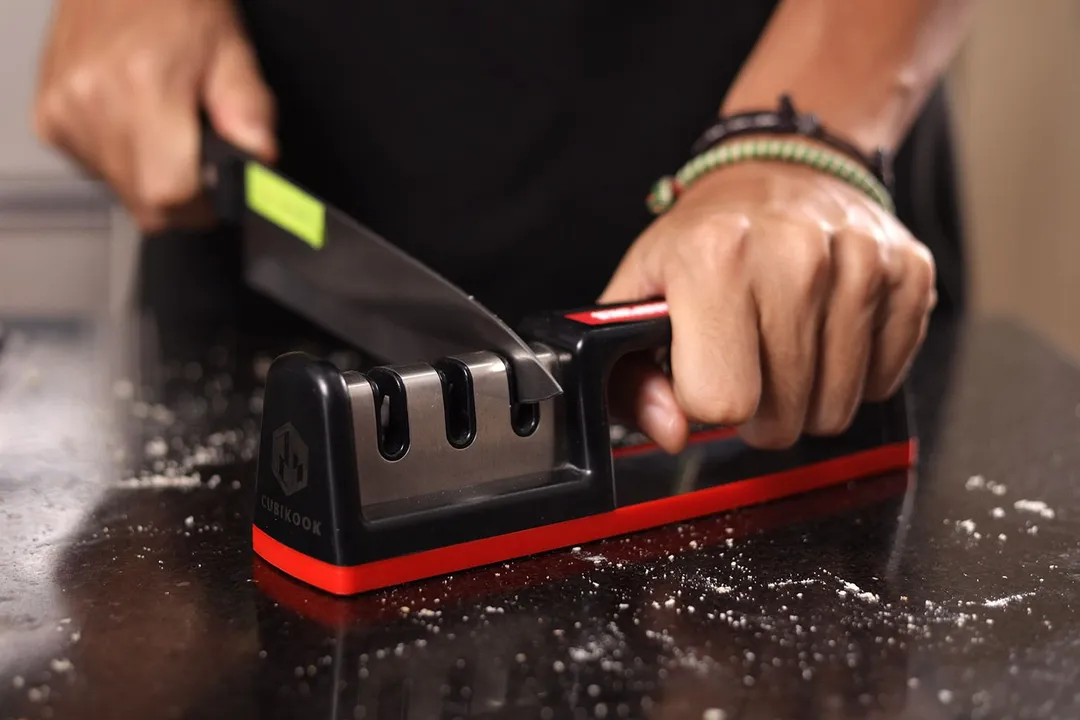
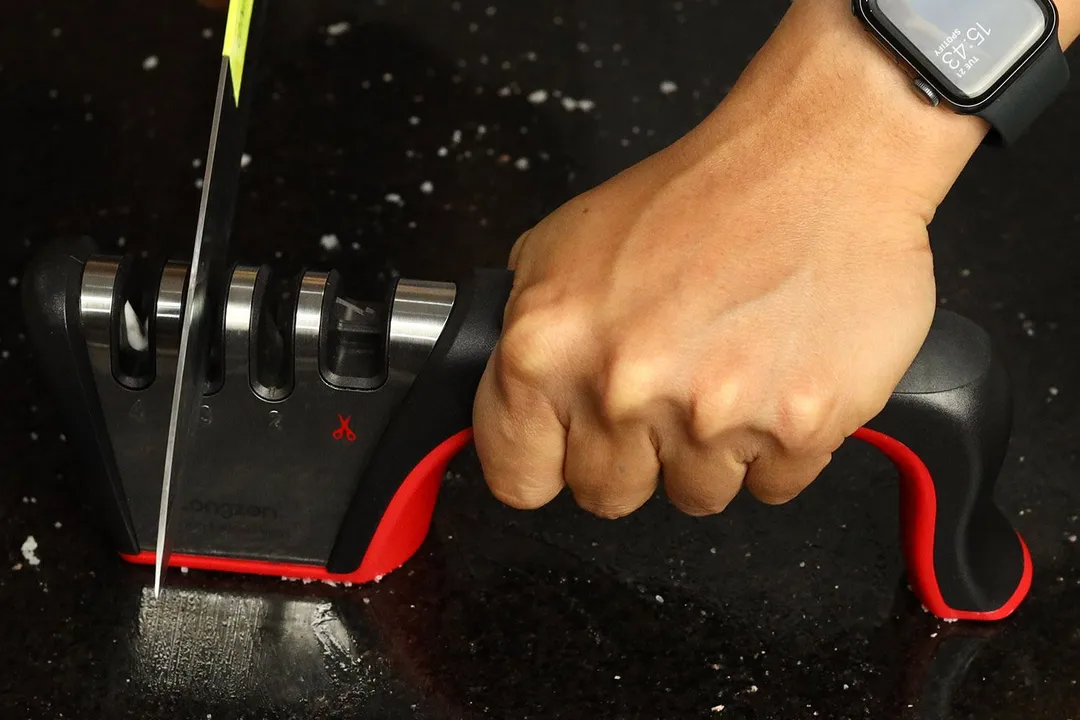
Behind the Comparison
Anh Ngo is a writer with 9 years experience at different media outlets, covering from public news and events to product testing and analysis. At HealthyKitchen101, she works across different departments, communicating closely with its network of writers, editors, and health, tech, and search engine experts to provide a meaningful and pleasant reading experience for visitors.
Lap is Head of the Research, Testing, and Review Team (RTR Team) at HealthyKitchen101.com, where he directs and supervises the testing of kitchen gadgets and appliances.
Nguyen Ntk is a graphic designer, photographer, and videographer whose philosophy centers around respecting and celebrating the beauty of reality. Through his lenses, Nguyen strives to capture the true essence of objects and events, showcasing and highlighting authentic features without distortion or exaggeration.



